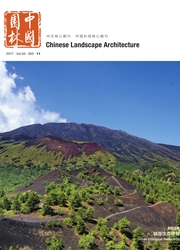

 中文摘要:
中文摘要:
江南洞天福地是以道教神仙信仰和江南地区独特的自然与人文条件为基础,在融合了古人心中理想景观模式的基础上,形成的独具江南特色的景观.从风景园林的视角出发,对江南洞天福地外围的自然环境空间和内部建筑空间进行综合性的布局分析.总结出江南洞天福地的外围自然环境空间是以古人心中的理想景观和理想栖息模式布局为主的,而内部建筑空间则以“洞-宫”轴线对称的院落式、以洞为“天”的“天路历程”式、依洞而建的“洞宫-体”式、背山面水的“风水佳穴”式这4种主要布局模式为主.最后,讨论了江南洞天福地的景观特征.
 英文摘要:
英文摘要:
Caverns of Heaven and Place of Blessing in Jiangnan is a unique landscape which is formed based on the immortal faith of Taoism and the unique natural and cultural conditions in Jiangnan, and is fused with the ideal landscape mode in the minds of the ancients. This article conducts a comprehensive layout analysis on its exterior natural environment space and interior architectural space from the perspective of landscape architecture. It comes to a conclusion that, the exterior natural environment space of the Jiangnan "Caverns of Heaven and Place of Blessing" is based on the ancients' ideal landscape and habitat layout pattern, while the interior architectural space is mainly based on four layout patterns: courtyard-style, symmetrical by the axis of "cavern - palace"; "the pilgrim's progress" style, cavern as "the shrine"; "cavern and palace integration" style, built along the cavern; "geomantic and admirable cavern" style, fronting water and with hills on the back. The fnal part of the article is a discussion of the landscape characteristics of the Jiangnan "Caverns of Heaven and Place of Blessing".
 同期刊论文项目
同期刊论文项目
 同项目期刊论文
同项目期刊论文
 期刊信息
期刊信息
